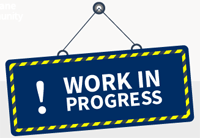The CRS has many features, but some to highlight include:
- The CRS has built-in machine learning (the Classifier), which uses the classifications from Cochrane Crowd to help users decide if a study report refers to an RCT or a CCT
- The machine learning tools can also be used to help users decide whether a study or study report is within the scope of their Review Group, using the Group’s existing register as the basis for the classification
- CRS has a triage function, which allows users to screen a batch of references within the CRS
- Key words or phrases in a title and abstract can be highlighted to help users to screen records more quickly
- Full text PDFs or other documentation can be attached to records
- ClinicalTrials.gov is searchable from within the CRS
- The CRS has sophisticated deduplication tools. Users can create their own filters to deduplicate, or use built-in filters
- Duplicate records can be merged together, to get the best content from both records
- There is a direct link to PubMed on records which have a PubMed ID number, and the fields in the record can be refreshed with PubMed content
- Records can be tracked through the system, and those that have been assigned to a particular review have an audit trail
- Records can be shared with other users in folders, enabling a team of people to work on the same batch of records

